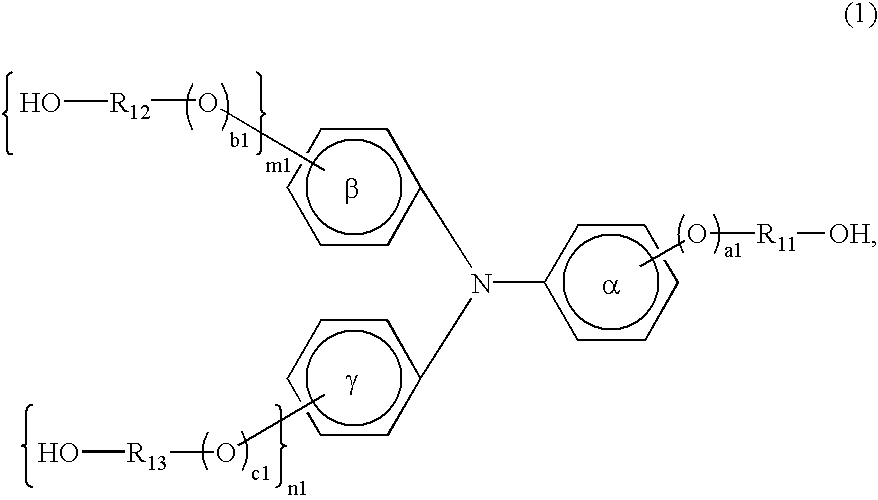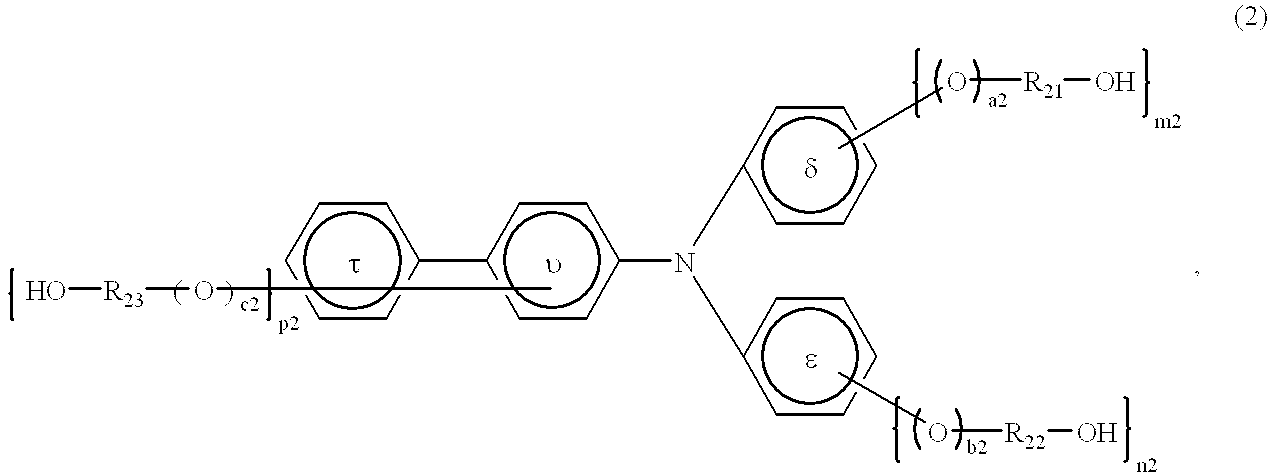Electrophotographic photosensitive member, process cartridge and electrophotographic apparatus
a photosensitive member and electrophotography technology, applied in the direction of electrographic process apparatus, corona discharge, instruments, etc., can solve the problems of chemical, electrical and mechanical impacts on the surface layer of the photosensitive member, and the use of a principally photoconductive polymer such as poly, vinylcarbazole and a charge transfer complex formed of 2,4,7-trinitrofluorene, etc., to achieve the effect of improving the electrical and mechanical properties of the surface layer of the photo
- Summary
- Abstract
- Description
- Claims
- Application Information
AI Technical Summary
Benefits of technology
Problems solved by technology
Method used
Image
Examples
examples 2-9
Eight photosensitive members were prepared and evaluated in the same manner as in Example 1 except for using protective layer-coating liquids obtained by using an Example Compound or a mixture of Example Compounds listed in Table 1 instead of Example Compound (1-23 as the charge-transporting compound.
examples 10-13
Four photosensitive members were prepared and evaluated in the same manner as in Examples 1, 5, 6 and 9, respectively, except for using protective layer-coating liquids obtained by reducing the amount of the 7%-surface-treated antimony-doped tin oxide fine particles to 20 parts and further adding 15 parts of 20%-surface-treated antimony-doped tin oxide fine particles (surface-treated with methyl hydrogen silicone oil ("KF99", made by Shin-Etsu Silicone
examples 14-17
Four photosensitive members were prepared and evaluated in the same manner as in Examples 1, 5, 6 and 9, respectively, except for using protective layer-coating liquids obtained by using 35 parts of surface-untreated antimony-doped tin oxide fine particles ("T-1", made by Mitsubishi Material K.K.) instead of the 7%-surface-treated antimony-doped tin oxide fine particles and further adding 3.5 parts of the fluorine-containing silane coupling agent ("LS-1090") used in Example 1, followed by the dispersion.
PUM
 Login to View More
Login to View More Abstract
Description
Claims
Application Information
 Login to View More
Login to View More - R&D
- Intellectual Property
- Life Sciences
- Materials
- Tech Scout
- Unparalleled Data Quality
- Higher Quality Content
- 60% Fewer Hallucinations
Browse by: Latest US Patents, China's latest patents, Technical Efficacy Thesaurus, Application Domain, Technology Topic, Popular Technical Reports.
© 2025 PatSnap. All rights reserved.Legal|Privacy policy|Modern Slavery Act Transparency Statement|Sitemap|About US| Contact US: help@patsnap.com



